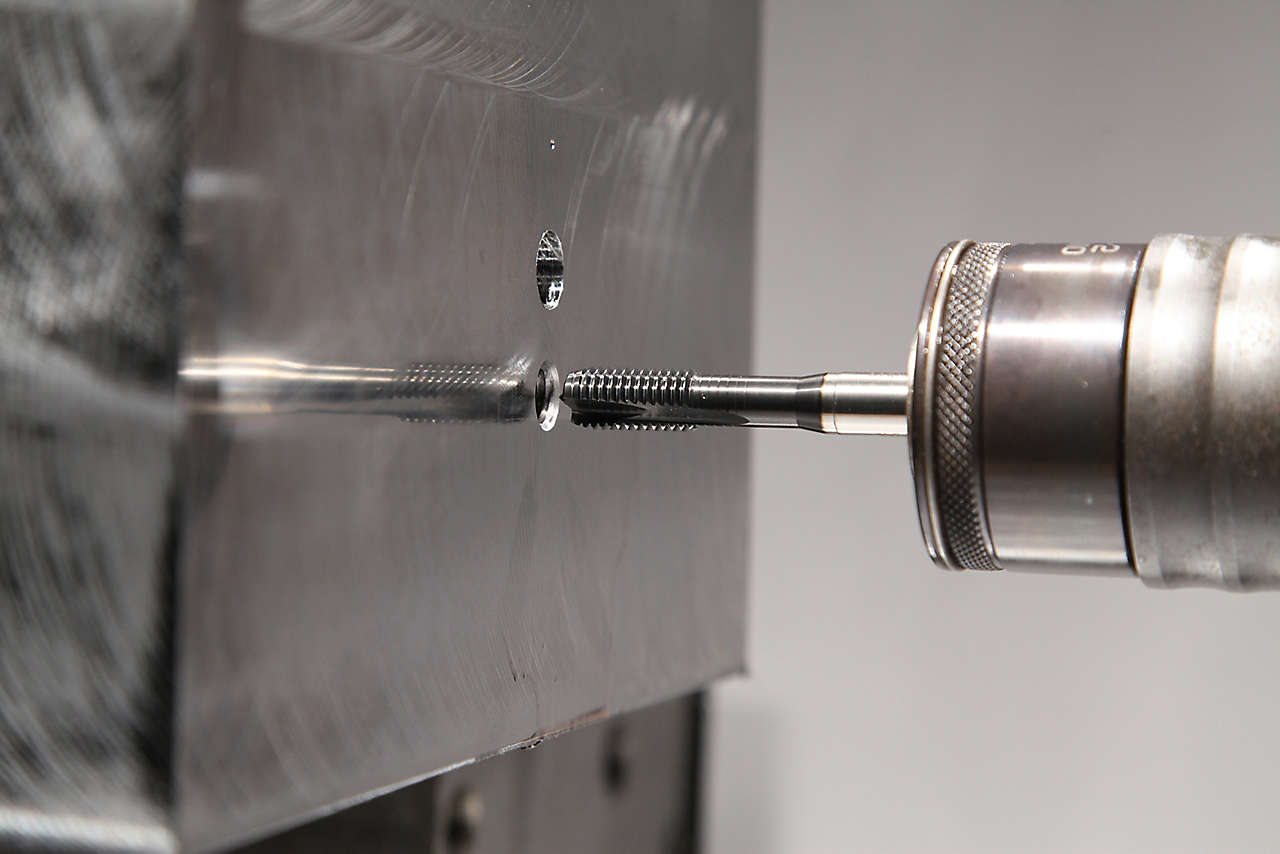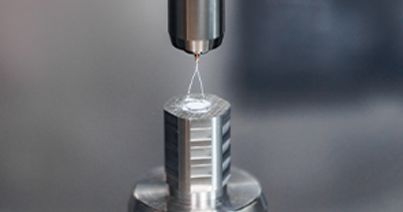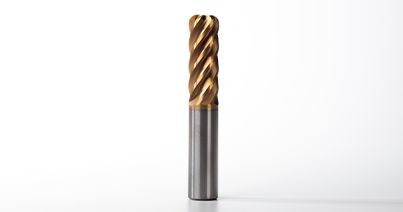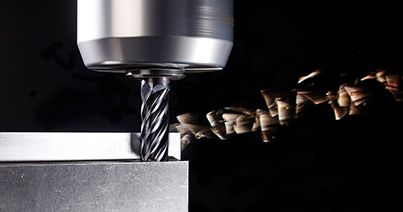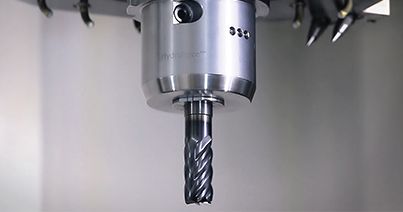
Understanding the Basics: Types of Thread Taps
When it comes to threading holes in metal or other materials, thread taps are an essential tool. But with so many different types of thread taps available, it can be overwhelming to choose the right one for your project. In this section, we'll cover the basics of the most common types of thread taps.
- Taper Tap: Taper taps have a gradual taper along the length of the tap. They are used to start threads and are the most commonly used type of thread tap.
- Plug Tap: Plug taps have a shorter taper at the beginning of the tap and a larger diameter than taper taps. They are used for threading through holes.
- Bottoming Tap: Bottoming taps have a straight section at the end of the tap, with no taper. They are used to thread blind holes, where a taper tap would not reach the bottom of the hole.
- Spiral Flute Tap: Spiral flute taps have a spiral flute that runs the length of the tap. This design helps to eject chips and is ideal for threading softer materials.
- Spiral Point Tap: Spiral point taps have a pointed end with a spiral groove that runs the length of the tap. This design pushes the chips forward and is ideal for threading harder materials.
Understanding the differences between these thread taps is essential for choosing the right one for your project. In the next section, we'll cover how to choose the right thread tap for your specific application.
Choosing the Right Thread Tap for Your Project
Choosing the right thread tap for your project is crucial to achieving the desired results. Here are some factors to consider when selecting a thread tap:
- Material: The material you are tapping into will affect the type of tap you should use. For example, a harder material like stainless steel will require a different type of tap than a softer material like aluminum.
- Thread pitch: The thread pitch refers to the distance between each thread on the tap. It is important to match the thread pitch of the tap to the thread pitch of the hole you are tapping.
- Thread type: There are several different types of threads, including coarse, fine, and extra fine. The thread type will affect the type of tap you should use.
- Tap size: The tap size should be chosen based on the size of the hole you are tapping.
- Cutting direction: Thread taps come in both right-hand and left-hand cutting directions. It is important to choose the correct cutting direction based on the type of material you are tapping into. By considering these factors, you can choose the right thread tap for your project and ensure that you achieve the desired results.
The Pros and Cons of Different Thread Tap Materials
The choice of material for a thread tap can significantly impact its performance and longevity. Here are some of the pros and cons of different thread tap materials to help you make an informed decision.
High-Speed Steel (HSS): This is the most commonly used material for thread taps. HSS taps are affordable, durable, and can be used on a wide range of materials. However, they can become dull quickly when used on hard materials like stainless steel.
Cobalt: Cobalt thread taps are an alloy of HSS and cobalt. They are more resistant to heat and wear than HSS taps, making them suitable for use on harder materials. However, they are also more expensive than HSS taps.
Carbide: Carbide thread taps are made from a combination of tungsten and carbon. They are extremely hard and can cut through even the toughest materials with ease. However, they are also the most expensive type of thread tap and require specialized equipment for sharpening.
Titanium Nitride (TiN) Coated: TiN-coated thread taps are coated with a thin layer of titanium nitride. This coating increases the tool's hardness and wear resistance, making it ideal for use on hard materials like stainless steel. However, they are also more expensive than uncoated taps.
Powdered Metal: Powdered metal thread taps are made by compressing and sintering metal powder. They are more wear-resistant than HSS taps and can be used on a wide range of materials. However, they are also more expensive than HSS taps and require specialized equipment for sharpening.
Choosing the right thread tap material depends on the type of material you are working with and the complexity of your project. Consider your budget, the required accuracy, and the amount of use the thread tap will endure. By choosing the right material, you can ensure that your thread taps will last longer and provide better results.
Tips and Techniques for Using Thread Taps Effectively
Using thread taps can be a bit challenging, especially if you're not familiar with the process. However, with the right techniques and tips, you can create high-quality threads quickly and easily. Here are some tips to help you use thread taps effectively:
- Use the Right Drill Size: The size of the hole you drill before tapping is crucial. If the hole is too small, the tap will break or not thread correctly, and if it is too large, the threads may not hold. Refer to a tap drill chart to ensure you are using the correct drill size for the tap you are using.
- Use the Right Cutting Fluid: Using the right cutting fluid can make a big difference in the quality of your threads and the lifespan of your tap. For example, using a lubricant like oil or cutting fluid will help reduce friction and heat during the tapping process, which can help prevent the tap from breaking or getting dull.
- Keep the Tap Straight: Keeping the tap straight while cutting threads is essential for ensuring the threads are uniform and straight. Use a tap wrench or holder to ensure the tap is perpendicular to the workpiece.
- Use Proper Cutting Speed: Different materials require different cutting speeds when tapping. It is essential to know the appropriate speed for the material you are working with. Too much speed can cause the tap to break, and too little speed can lead to poor thread quality.
- Back Off the Tap: Backing off the tap after every turn or two can help break the chips that form during the cutting process. Breaking chips prevent them from accumulating in the hole and causing damage to the tap or the threads.
- Clean the Tap Regularly: After use, clean the tap thoroughly to remove any chips or debris that may have accumulated. This helps prevent rust and corrosion, which can reduce the lifespan of the tap.
By using these tips, you can improve the quality of your threaded holes and extend the lifespan of your taps. It's important to remember that practice makes perfect, and with time, you'll become more comfortable and proficient at using thread taps.
Related Articles
- Micromachining: Exploring the Growth of Medical InnovationExplore micromachining and its relation to medical devices, the tools and materials used, and why manufacturing plays a vital role in this area.Explore micromachining and its relation to medical devices, the tools and materials used, and why manufacturing plays a vital role in this area.
- 10 Tips for Milling TitaniumMachining titanium can be a challenge, but with the right techniques and tools, you can achieve high-quality results. Discover 10 tips for milling titanium.Machining titanium can be a challenge, but with the right techniques and tools, you can achieve high-quality results. Discover 10 tips for milling titanium.
- Mastering Precision: The Anatomy of a Toolholder SystemToolholding plays a pivotal role in machining. Explore the anatomy of a toolholding system and get some tips on how to use them effectively.Toolholding plays a pivotal role in machining. Explore the anatomy of a toolholding system and get some tips on how to use them effectively.
